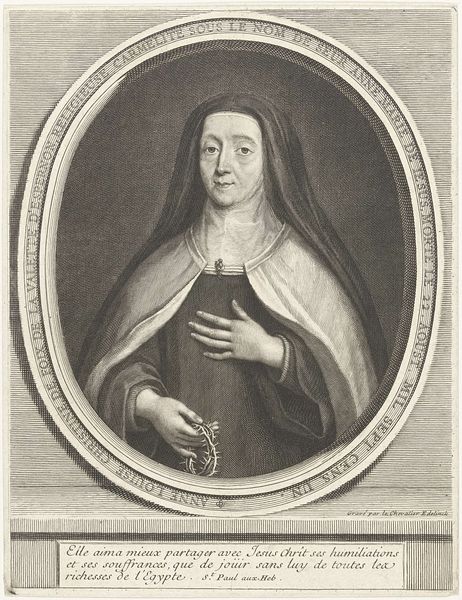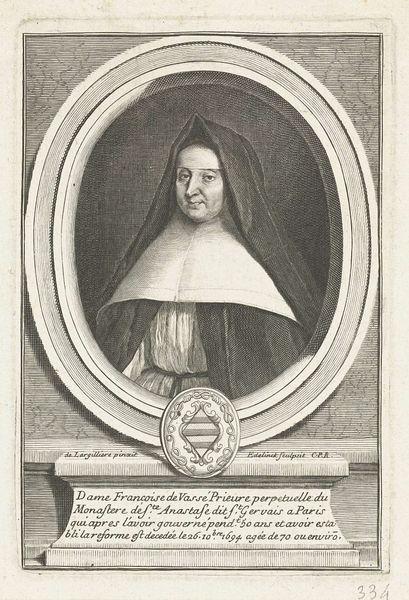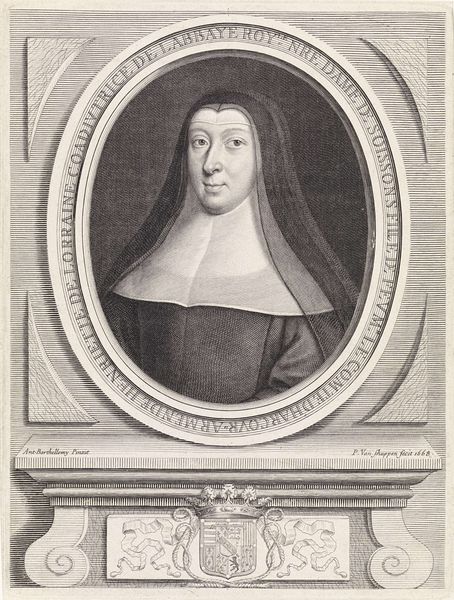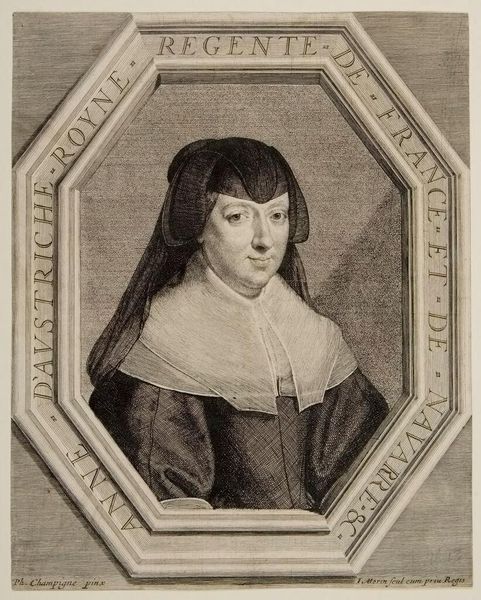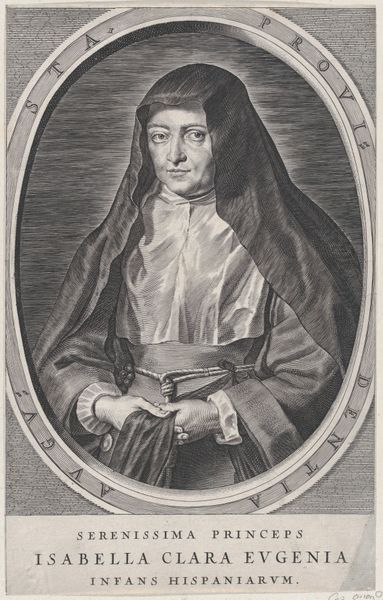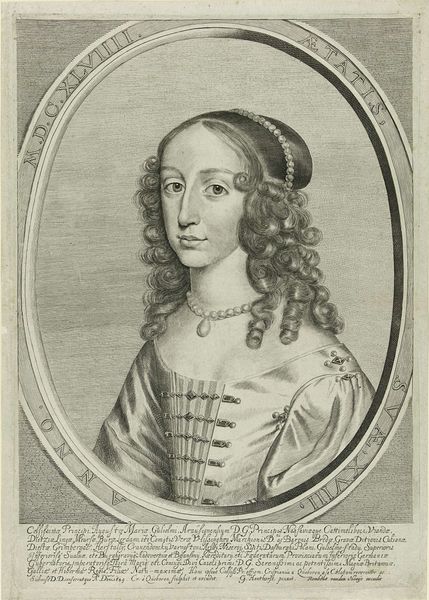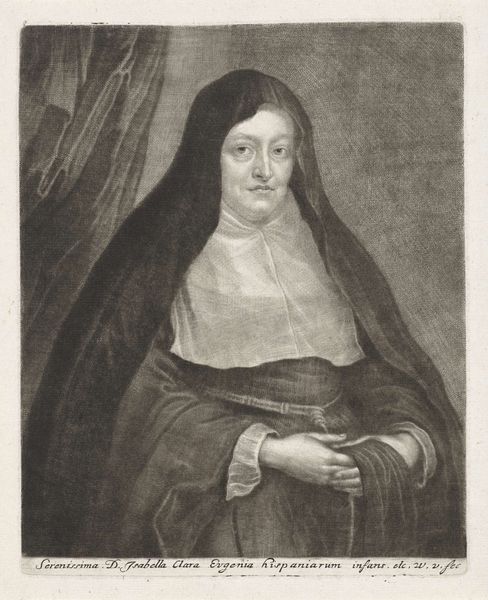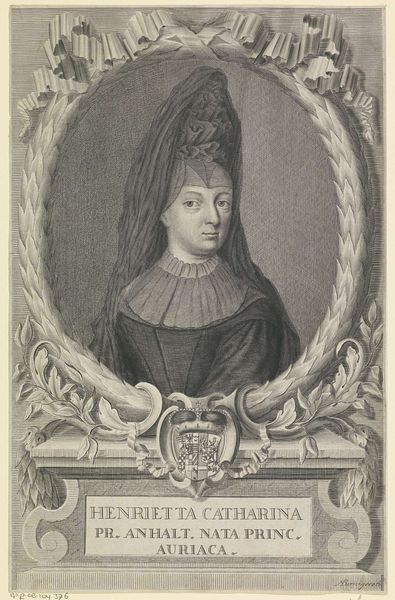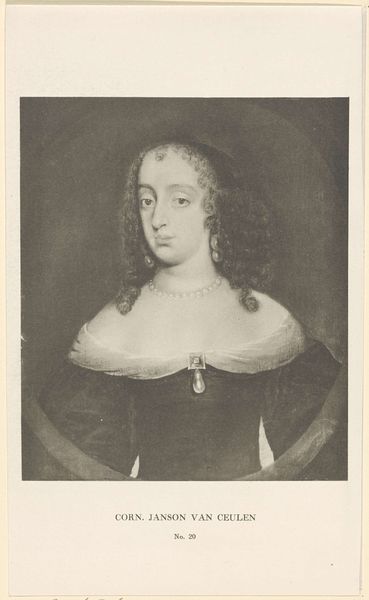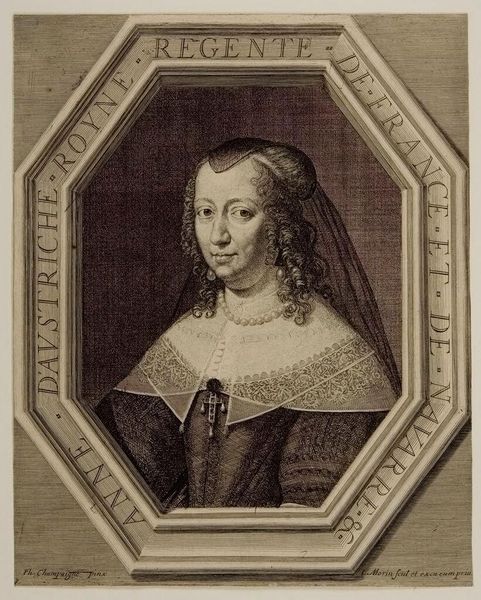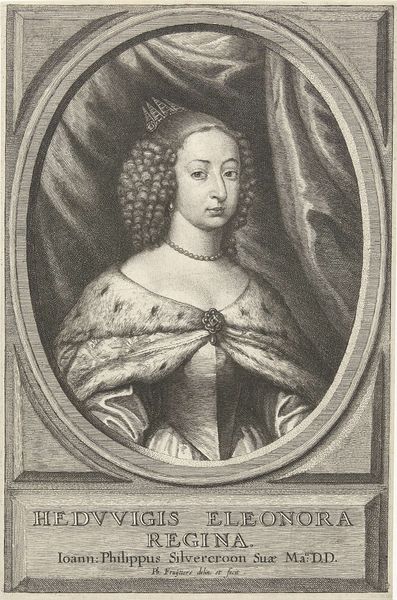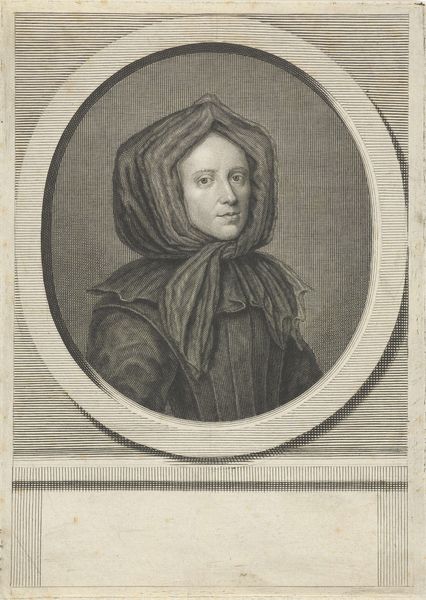
Portret van Louise de la Misericorde, alias Françoise de La Baume Le Blanc de la Vallière 1670 - 1724
0:00
0:00
jacobgole
Rijksmuseum
print, engraving
#
portrait
#
baroque
# print
#
charcoal drawing
#
pencil drawing
#
line
#
portrait drawing
#
history-painting
#
engraving
#
realism
Dimensions: height 254 mm, width 209 mm
Copyright: Rijks Museum: Open Domain
Curator: Here we see Jacob Gole's print, "Portret van Louise de la Misericorde, alias Françoise de La Baume Le Blanc de la Vallière," created sometime between 1670 and 1724. It resides here in the Rijksmuseum. Editor: My first impression is one of serene melancholy. The delicate lines, the oval frame—it creates a feeling of contained emotion, almost like a captured memory. Curator: Considering its materiality, this print allows us to think about the process of reproduction and accessibility in disseminating images of prominent figures like Louise de la Vallière. The engraving process itself, the labor involved, speaks volumes about the market for celebrity and religious devotion in the Baroque era. Editor: Exactly. And framed by social context, La Vallière's story is inherently compelling. She was a mistress of Louis XIV who later became a Carmelite nun. This image becomes a potent symbol of repentance and the performance of religious identity, reflecting societal expectations placed upon women of status. The act of image-making helps solidify her transition and promote it. Curator: Furthermore, thinking about Gole's source material – was it a painting, another print, a drawing done from life? What kind of workshop practices informed the quality of the final product that we see now? What labor division facilitated the transfer of skill and knowledge necessary to make a print of this quality? These are all valuable avenues for interpretation, reminding us this image's value hinges on tangible inputs. Editor: Indeed, that materiality echoes the transition La Vallière enacted through ritualistic changes of garments and physical settings, from the luxurious court to a spare convent, marking shifts in societal perception and religious piety, all within highly regulated spaces. Museums, like this one, play a critical role in how we encounter those echoes. Curator: Examining it in that context reminds us that this wasn't just an act of piety. It was a carefully crafted performance of public image— one that continues to resonate with us today, due in large part to these accessible mediums. Editor: Agreed. Seeing her portrayed in such a composed manner underscores how identities are forged, contested, and ultimately, preserved, across time, in dialogue with evolving norms.
Comments
No comments
Be the first to comment and join the conversation on the ultimate creative platform.
